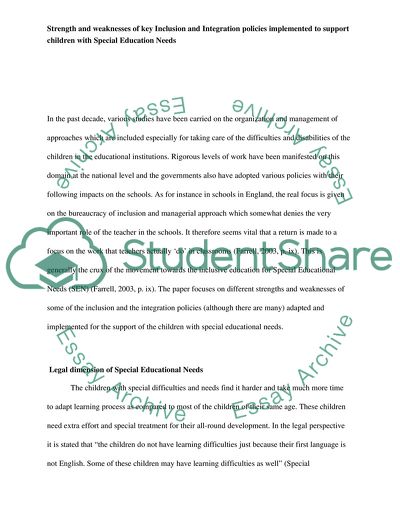Cite this document
(Children with Special Education Needs Essay Example | Topics and Well Written Essays - 2500 words, n.d.)
Children with Special Education Needs Essay Example | Topics and Well Written Essays - 2500 words. https://studentshare.org/sociology/1775017-1discuss-the-strengths-and-weaknesses-of-key-inclusion-and-integration-policies-implemented-to-support-children-with-special-education-needs
Children with Special Education Needs Essay Example | Topics and Well Written Essays - 2500 words. https://studentshare.org/sociology/1775017-1discuss-the-strengths-and-weaknesses-of-key-inclusion-and-integration-policies-implemented-to-support-children-with-special-education-needs
(Children With Special Education Needs Essay Example | Topics and Well Written Essays - 2500 Words)
Children With Special Education Needs Essay Example | Topics and Well Written Essays - 2500 Words. https://studentshare.org/sociology/1775017-1discuss-the-strengths-and-weaknesses-of-key-inclusion-and-integration-policies-implemented-to-support-children-with-special-education-needs.
Children With Special Education Needs Essay Example | Topics and Well Written Essays - 2500 Words. https://studentshare.org/sociology/1775017-1discuss-the-strengths-and-weaknesses-of-key-inclusion-and-integration-policies-implemented-to-support-children-with-special-education-needs.
“Children With Special Education Needs Essay Example | Topics and Well Written Essays - 2500 Words”. https://studentshare.org/sociology/1775017-1discuss-the-strengths-and-weaknesses-of-key-inclusion-and-integration-policies-implemented-to-support-children-with-special-education-needs.


